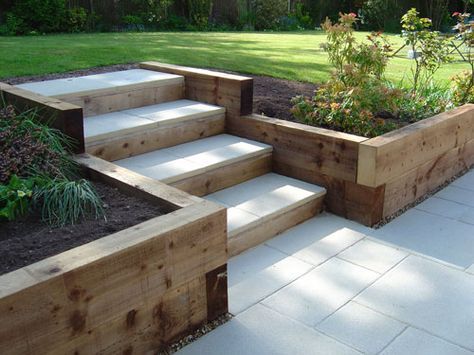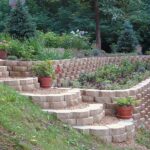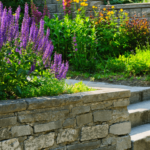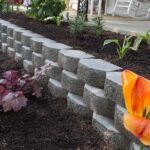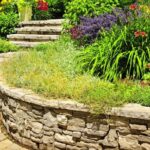A garden retaining wall is a structure designed to hold back soil and create a level surface in a garden or yard. These walls can be both functional and decorative, providing support for steep slopes and adding visual interest to outdoor spaces. There are several different types of materials that can be used to build retaining walls, including concrete, stone, brick, and wood. Each material has its own advantages and considerations, depending on the specific needs and aesthetics of the garden.
One of the main benefits of a garden retaining wall is its ability to prevent soil erosion. By creating a barrier between different levels of terrain, the wall helps to keep soil in place and prevent it from washing away during heavy rain or wind. This is especially important for gardens located on sloped terrain, where soil erosion can be a serious problem. Retaining walls also help to create more usable space in a garden by leveling out uneven areas and providing support for plants and trees.
In addition to their functional benefits, garden retaining walls can also enhance the overall design of a garden. These walls can be designed in a variety of styles and materials to complement the existing landscaping and architecture of a property. Stone retaining walls, for example, can add a rustic and natural look to a garden, while concrete walls can have a more modern and industrial aesthetic. By choosing the right materials and design for a retaining wall, homeowners can create a cohesive and attractive outdoor living space.
When planning a garden retaining wall, it is important to consider the specific needs of the site and the intended purpose of the wall. Factors such as soil type, drainage, and the slope of the terrain will all influence the design and construction of the wall. It is also important to ensure that the wall is properly reinforced and built to withstand the pressure of the soil behind it. Consulting with a professional landscaper or contractor can help ensure that the retaining wall is built correctly and will provide long-lasting support for the garden.
Overall, a garden retaining wall can be a valuable addition to any outdoor space, providing both practical benefits and aesthetic appeal. Whether used to create a level garden bed, prevent soil erosion, or simply add visual interest to a landscape, retaining walls can help transform a garden into a more functional and beautiful outdoor living space. With the right materials and design, a garden retaining wall can enhance the overall enjoyment and value of a property for years to come.
